
5 year warranty.
Weak diodes.
Broken website.
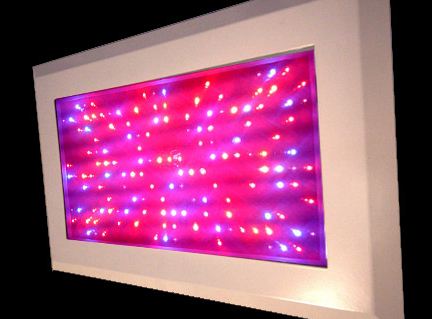
The Spectra LED 290. 2011 Model
The Spectra LED grow light by Grow LED Hydro Inc. is a heavy-duty light designed to grow cannabis. It is well-respected in the online marijuana forums. Not everybody uses this light, but there are very few people who have something bad to say about it (which you’ll realize is quite the miracle if you’ve ever visited these forums). Below is my review of the Spectra LEDs using my normal criteria for evaluating these lights.
First off we need to take a look at the line of products being offered by Grow LED Hydro (GLH).
- Spectra LED 180
- Spectra LED 290
- Spectra LED 500
The main difference between the three lights is the number of watts drawn. Below I’ll be reviewing the 180 watt model, but keep in mind that if you understand one of the models, then you understand them all.
Trial Period: A+
GLH offers a 120 day trial period. This is the longest trial period I have seen in the industry and therefore gets the highest graded possible. 120 days is plenty of time to try out the light and see if it will work for your specific grow. Keep in mind that this trial period does have some stipulations: you have to keep a grow journal with pictures and what nutrients you were using. For full details see here: http://growledhydro.com/returnsandwarranty.html
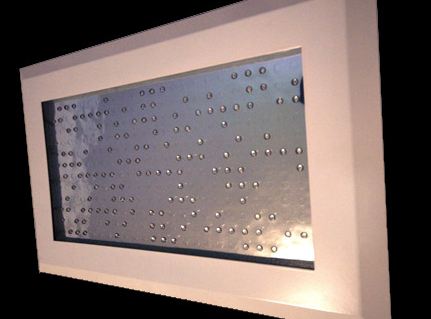
Built to last at least 5 years!
Warranty: A +
For years manufacturers of LED grow lights have claimed that their lights will outlast HID lights by years, but they never put their money where their mouth was. Finally, a company is offering a warranty that actually indicates some belief that their lights will indeed last a long time. GLH offers a five year warranty on their Spectra LED grow lights. You won’t find any high-pressure sodium lights that offer a warranty even close to that.
Wattage: A+
The Spectra 180 has an actual draw of 180 watts. This is a big deal because most LED lights are labeled incorrectly (read here if you want the nitty-gritty about watt-labeling). Mike, the owner of GLH, is doing it the right way by labeling the lights by the amount of watts they actually draw. I recommend around 200 watts for a four square foot area. Mike mentions that this light will cover about five square feet and I think that’s a fair assessment. It will cover more than that during the veg stage, but during flowering four or five square feet sounds about right.
Cooling System: B+
Most people I talk with are surprised to find out that the number one reason LED lights break is heating issues. They are baffled because they’ve always assumed LEDs don’t produce any heat.
It’s true that LEDs don’t produce near as much heat as traditional lights, but the individual diodes can get hot (read here about how LED grow lights work). If they get too hot, then they will break. This means that for an LED to last as long as it should, the light needs to have an excellent cooling system in place. The two main components of the cooling system are the heat sink and the fans. Here’s a look at the fans on the Spectra 180.

Keeping the diodes cool is important.
I don’t know as much about the Spectra heat sinks as I would like because I haven’t been able to get a hold of Mike (see my conversation about this below), but there are a couple of things that lead me to believe the heat sinks are in good shape.
1. Grow LED Hydro has upgraded the heat sink with their new 2011 edition. Problems with the heat sink occur when companies upgrade the power of the light (the watts), but keep their heat sink the same. This would be like upgrading the power of your car, but not upgrading the brakes. You might be able to drive fast, but you won’t be driving for very long. The fact that GLH is upgrading the heat sink with each new edition is a very good sign.
2. The warranty is for five years. If a company is skimping on the cooling system, then they aren’t going to offer you a five-year warranty. If the heat sink isn’t working properly you’ll know within a year (two at the most), because all of your diodes will start going out.
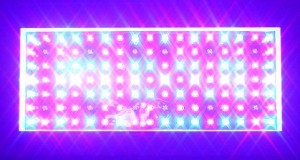
Under $3 per watt is a great deal.
Price: A-
Did I mention that these are heavy-duty lights meant to grow plants from start to finish? These things are powerful and probably aren’t intended for your average indoor gardener who just wants to grow a flower or two. These are expensive lights because they are intended for serious growers. One number that I like to look at is price per watt. For heavy-duty lights like this one the average in the industry is around $4 per watt. This light comes in at $2.78 ($499.99/180 watts) per watt. That’s a pretty fair price.
Spectrum: A
The Spectra series of LED lights approaches the light wavelength issue with the “more is better” approach. When LEDs were first being used as growing lights, it was pretty common to see lights that just had red and blue light around the 440nm and 600nm wavelengths.
This type of light with just red and blue will work great as a supplemental light. As LED grow lights have evolved to become a primary light for plants, the amount of wavelengths provided by these lights has increased. The Spectra 180 watt model comes with 12 different wavelengths.
GLH doesn’t release their wavelengths for proprietary reasons, but I’m sure their spectra is similar to the 357 Magnum LED which has 11 wavelengths. I would guess that the Spectra’s wavelengths are close to the following: (420nm/439nm/469nm/483nm/3000k-3500k/642nm/667nm/680nm/720nm/740nm).
Beam Angle and Diode Chips: B-
If there was one thing that worried me about the Spectra lights, it’s their combination of beam angle (90 degrees) and 3watt-3chip diodes.
Most of the best lights on the market are using some 60 degree diodes in order to provide a more intense beam that will reach to the lower parts of the plant (here’s a funny write-up I did on LED beam angles over at myhydroponicgardening.com). 90 degree beam angles aren’t as intense as 60 degree beam angles. A combination of different beam angles is pretty common. All of that being said, a 90 degree beam angle will work just fine.
Where I get worried is when you add a 90 degree beam angle with a 3-watt, 3-chip light. Here’s my detailed write-up on 1 watt vs. 3 watt vs. 3 watt -3 chip LED lights. The basic idea is that a 3 watt, 3-chip light looks bright up close to the human eye, but it lacks penetrating power. Most of the best lights are using pure 3-watt diodes instead of 3watt, 3 chip diodes.
This probably isn’t a deal breaker because many people have had great success with this light, but it is definitely something I would like GLH to explain.
Website: F
The Spectra lights by Grow LED Hydro are some of the best lights on the market, but their website is without a doubt the worst on the market. Here are just a few of the blunders that I run into when using growLEDhydro.com.
Blunder 1: The contact form is broken (see image below) and has been for months. I’ve tried contacting Mike about this but I haven’t heard back from him. Nor have I seen the contact form fixed.

Basically, you can’t send Mike a message. My first experience with this was typing in a super long message and then clicking “Send Message.” Nothing happened because I couldn’t type in the verification code. This definitely should be filed under cruel and unusual punishment.
For those of you would prefer to email instead of talk on the phone there are three things that you can try (I say “try: because Mike still doesn’t seem to respond to my emails; you can’t blame him though because I’m just the pesky review guy).
Option1: Try using sales@growledhydro.com. I hunted down his email in the forums by contacting some of the people that have bought his lights.
 Option2: Sign up as a customer. On the homepage of the site there is an option to sign up as a new customer. You have to enter in your name and address, but you don’t have to give your credit card number or anything of that nature to sign up. Once I signed up it gave me an option to send Grow LED Hydro a message. However, now that I’ve left the website and come back to it, I can no longer find that option.
Option2: Sign up as a customer. On the homepage of the site there is an option to sign up as a new customer. You have to enter in your name and address, but you don’t have to give your credit card number or anything of that nature to sign up. Once I signed up it gave me an option to send Grow LED Hydro a message. However, now that I’ve left the website and come back to it, I can no longer find that option.
Option 3: mike@growledhydro.com. After I signed up to be a customer I received an email from this account.
Blunder 2:
The forums don’t work. Not a huge deal, but don’t include a link to the forums on every page if they don’t actually work. On one page of the website it even invites you to the forums saying, “come into our forums and have a discussion with some of the growers that have actually used my lights…”.

The forums are looking pretty sparse.
Blunder 3:
There are a lot of other minor glitches that are a little annoying, but probably aren’t worth covering in-depth. For example, the website has “The New Website is Under Construction” intermittently scattered throughout the site. At one point during the sign up process I was asked to purchase Zen Cart which I imagine is the software used to set up the site. The whole website experience is quite ridiculous.
I’m a fan of the lights, but the website needs overhauled in a bad way.
Grows I’ve Found Using the Spectra
Leave a comment in the message box below if you want your grow listed here. As time passes and I find legitimate grows, I’ll be adding them to this section.
Questions I Have about the Spectra
Why the secrecy with the wavelengths? All your competitors are publishing the information.
What’s up with the 3-watt 3-chip diodes?
When will the website be overhauled?
You can visit the official site here: http://growledhydro.com/
Other LED grow light reviews you might be interested in:






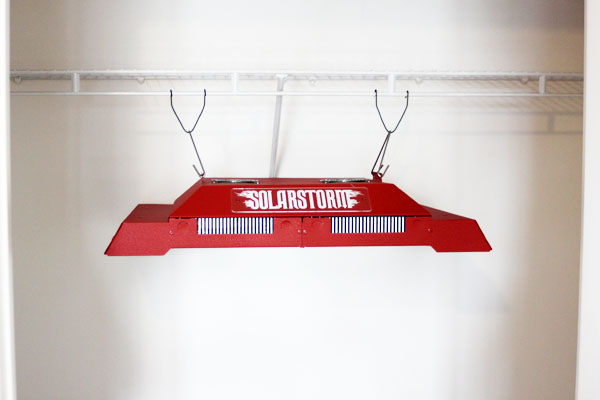
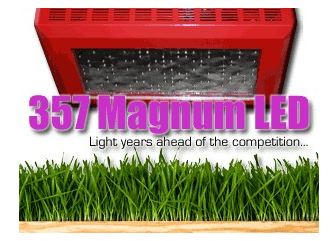
This is an excellent blog and I get good information here. I just got my 100w diamond series light and I could see that it was a quality light the second I took it out of the box. The heat sink has fins on it; it’s not “flat” like most others. The fans are super quite, a plus for me! I also bought a 15w spectraBoost grow light, (blue, both lights have been on for two weeks now with no problems to report. Since my grow tent is in a non-heated area, I have had to add a heater because the lights do not produce heat. So far I have seen very good growth, with very healthy leaves. I love the fact that you can control the red and blue lights. I will keep in touch on how things are going !!!
No updates? I’ve heard they lowered to power draw from 180 to 120.This could be a snazzy site if you stayed on top of it.
Hey Budreaky,
Thanks for your comment. I review all the top lights quite frequently but occasionally I’ll fall behind. Thanks for the update.
Nate
Just double checked, the 120 watt Spectra has an actual draw of 180 watts. Are you sure they downgraded to 120 watts?
Mikes a great guy and is offering me an unbelievable deal on a 500 .glh is the shit.
I agree that Mike is a great guy. I just think he needs to make some updates to his website. He’s hard to get a hold of too. Must be busy.
Nate
I had a few emails with mike and apparently the actual wattage of the 180 is around. 150. He stated the actual wattage wasn’t as important as the number of less.which the 180 has 100 less.do you think a spectra 500 will be good to flower a 4×4 tent? Thank-you for the blog.
I believe the 180 was the 2011 model and the 120 is the 2012.but pretty much the same.but if that’s the case im not positive about the “120” model.
And *leds. Not. *less in my previous post.
Hi.cool site.I got a pro grow 260 from Hydroponics hut.Your talk about 3watt 3chip led lights is making me a little worried about there 3 watt CREE HO chipset.Please tell me these are good lights and not the 3 light chip.I was just gonna buy another one till I read this.So far I really like the light but for the money if I can do better I will.What are your thoughts on these lights?Thanks Troy.
I’ve been talking with mike and it turns out for 2012 he is scrapping his entire line of panels and going with a 240w panel only. It has a 90 degree on the red and 120 degree on the blue. covers about 3×3.
I asked mike about why he chose not to go with a 60 degree beam and here was his response: “60 degree is much to narrow and actually makes a tighter foot print and does not allow the colors to blend very well before hitting the plant.”
And about using 3w/3 instead of true 3w diodes:”Throughout 2011 the spectra panels used a true single 45ml 3w chip but have to come to find out via my testing that three 1w chips under one lens gives much more penetration, coverage and spectrum saturation, not only that but its much more efficient and since not every chip is the exact nanometer you get a little more of a wider spectrum than by using a single chip.”
“Hypothetically speaking:
one single 3w chip puts out at 35 lumen at 660nm at around 80% power
three 1w chips put out 20 lumen each at 60% power and you get 660nm 657nm and 662nm”
Keith,
Thanks for the excellent information. I talked with Mike recently about the same things.
However, he didn’t mention that he’d be moving to a 3w/3chip setup. I’m very curious indeed about that move as it seems to be a step in the wrong direction.
I’d need to see the distance and micromole measurements to be certain. I could see the 3w/3chip setup putting off more light at about 1 foot, but beyond that I’d expect to see the true 3 watt diode with more micromoles of light.
Very interesting point about the wider spectrum (that I can believe).
Thanks for your thoughts. I’ll be putting the Spectra under a PAR measurement tool soon so I’ll see what I come up with.
Best,
Nate
I thought I would put in my 2 cents.
I bought three spectra 290 units just a few months ago.
Plugged in just one and was very impressed by the output of light.
Took it to my local hydro shop and blew their LED unit on display straight out of the water 🙂 A happy moment that was! Lol
I believe all three will easily match a 1k HID but the beauty of it is very little heat.
I feel almost no heat coming from these units.
Have not flowered with them yet but soon and Im betting it’s gonna be just fine.
Overall the experience ordering from Mike was an excellent one. A bit pricey but probably worth it.
I do agree on the low grade website though. Not a huge deal to me but it could use a slight step up.
Only thing I would like to see changed is the hanging wires. Kinda cheap but you can easily change em yourself to something better. A minor flaw.
Units seem like sturdy construction overall.
I would recommend these LED units for sure.
K- Hawaii
Hey Keith,
Thanks for the updates. I just received the newest version of the Spectra yesterday and I’m looking for somewhere in my house to start growing. haha. My normal areas are currently being used by the SolarStorm and Vipar.
Keep us updated on how your flowering goes.
Best,
Nate
Very curious to hear how you like the new spectra and how it does under your PAR measurement tool. I’ve been reading some grow journals on another site recently and 2 guys had problems with this new light burning their plants to death. They said it was either a spectrum problem or an off gassing of some sort. Want to know what you think about it though.
Hey Ghosty,
I’m curious as well. I think I remember reading those journals a while back. I don’t remember all the details now, but I thought that was the 2011 model (not the newer 2012 model). Anyways, if it’s a light bleaching problem then that’s a good problem to have! It means you’ve got a powerful light on your hand. Move it up a few inches and enjoy the wider coverage space. A gassing problem is a different issue entirely!
I’ll keep you updated.
Nate
please keep us updated on how you like the new spectra 240w.
Which light would you say is better, this new spectra 240 or a 357 magnum?
my major concern is the beam angle. THey are so different. Yet both companys claim their lights should be hung about the same distance from the canopy, about 15-18. Does the beam angle dictate how far away you have to hang the light from the canopy? if so then wouldn’t the magnum need to be hung much higher?
Hey Keith,
I’ll keep you updated. I’ll be putting the new spectra through the ringer here shortly.
Your question about the beam angle is a good one. Beam angle is just one of the factors you have to consider when thinking about distance from the light. You also have to consider the power of each diode and the watt draw.
I just purchased a quantum sensor that will give me a better idea about the actual light power being emitted by these lights. I’ll be testing all my lights under this sensor and I’ll report the data here. That way we won’t have to do as much guesswork about which light is bringing more power.
I’ll put a disclaimer right here that the quantum sensor has its limitations, but it will be much better than what we’re working with now.
Nate